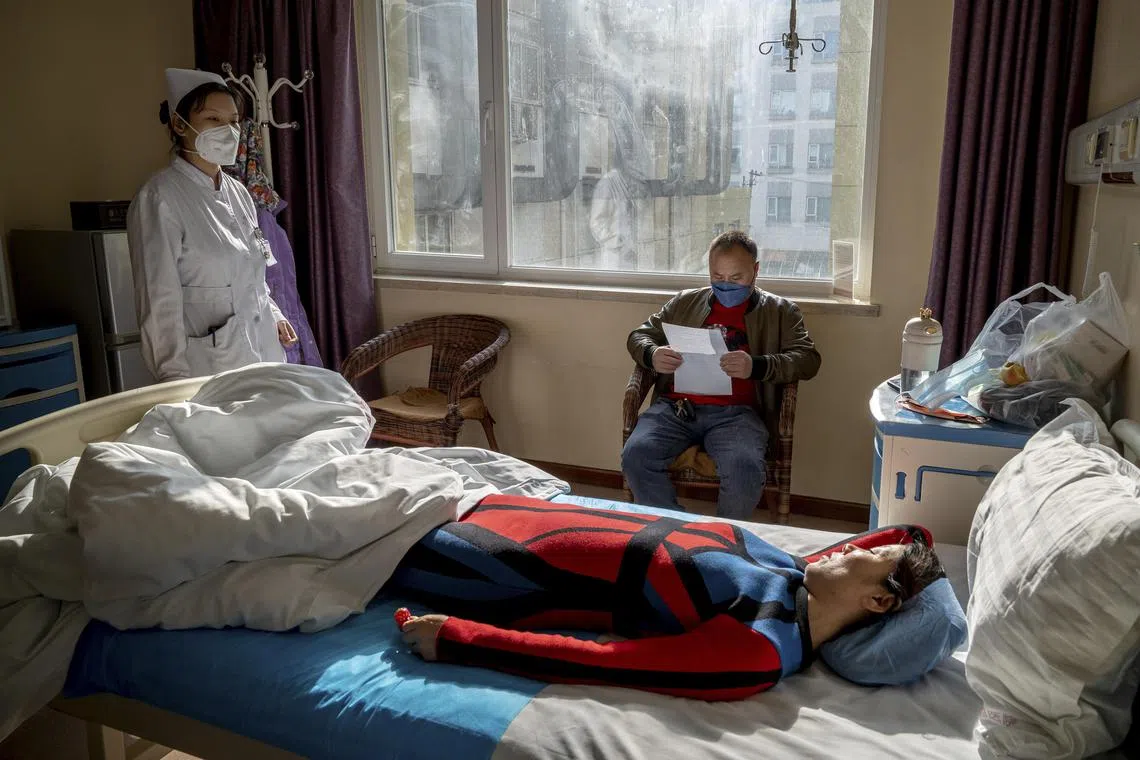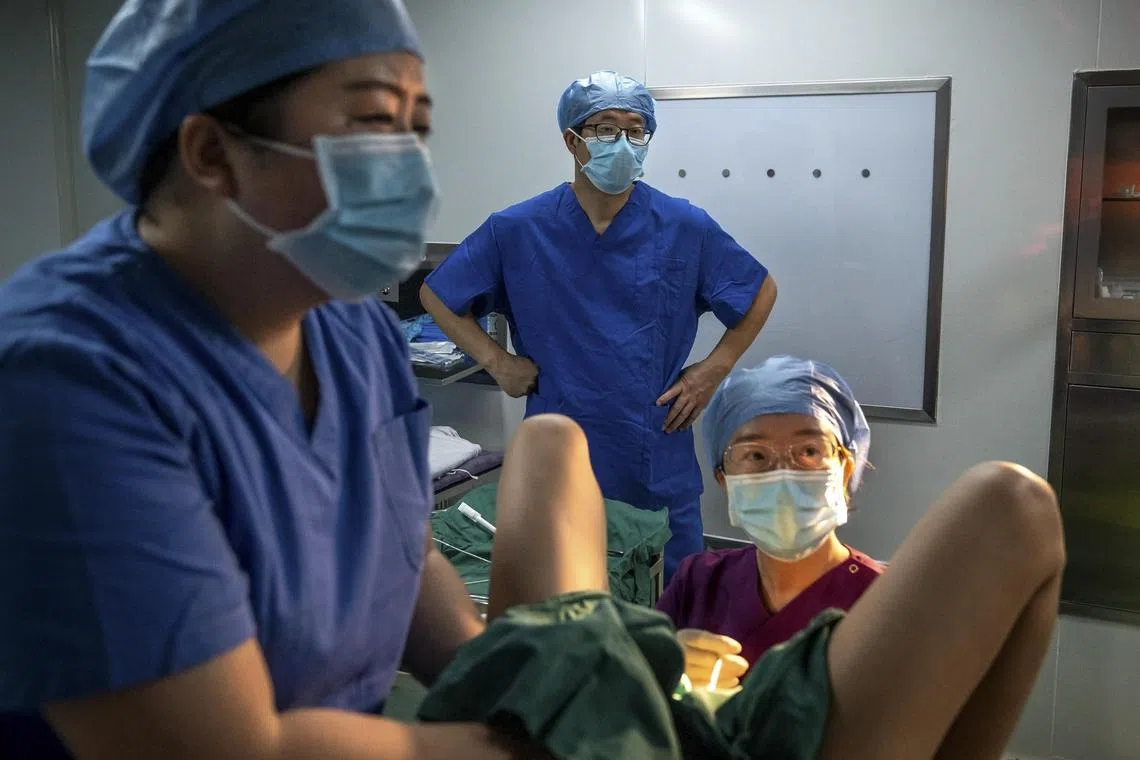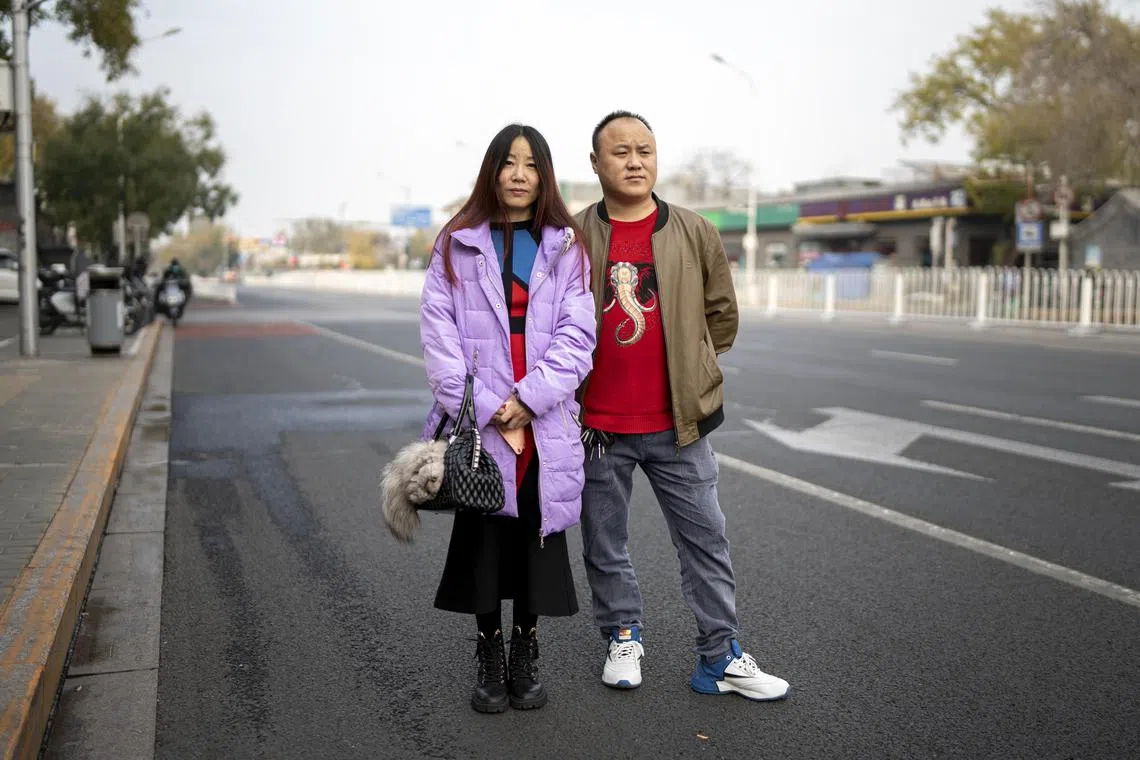IVF offers hope as China grapples with a shrinking population
Sign up now: Get insights on Asia's fast-moving developments

Ms Guo Meiyan rests in her room after an IVF transfer embryo procedure at Beijing Perfect Family Hospital, on Nov 23, 2022.
PHOTO: NYTIMES
Follow topic:
BEIJING – It was a cold and overcast morning in November, but one full of promise for Ms Guo Meiyan and her husband: They would finally get a chance to start a family.
As Ms Guo, 39, was wheeled on a gurney into a hospital room where a doctor transferred her eggs – which had been harvested and fertilised – back into her uterus, she also felt a sense of dread.
“If the transplant is not successful, all the money we spent will be wasted, all the pain I endured will be wasted, and we will have to start over again,” said Ms Guo, who had travelled 200km to Beijing from the northern city of Zhangjiakou. She and her husband had been living in hotels near the hospital for a month during the final stage of the in-vitro fertilisation (IVF) process.
They are among hundreds of thousands of Chinese couples who turn to assisted reproductive technology every year after exhausting other options to get pregnant. They travel from all corners of China to big cities such as Beijing in the hopes of beating the odds of infertility. Many wait in long lines outside hospitals before sunrise, just for the possibility of a consultation.
Now, the Chinese government wants to make the technology, which became legal in 2001, more accessible. It has promised to cover some of the cost – typically several thousand dollars for each round – under national medical insurance. It is one of more than a dozen policy measures that Chinese officials are throwing at what they see as a very big problem – a fertility rate so low that China’s population has started to shrink.

Ms Guo Meiyan during an IVF transfer embryo procedure at the Beijing Perfect Family Hospital.
PHOTO: NYTIMES
‘Getting old before getting rich’
China has arrived at this turning point sooner than other countries at its stage of economic development, leading to what some demographers refer to as the curse of “getting old before getting rich”.
As fewer babies are born each year and China’s oldest people live longer, the government is being forced to tackle a series of connected challenges – a shrinking labour force, a fledgling pension system and a generation of young people who are not interested in having babies.
Subsidising fertility services such as IVF, a technology that fertilises eggs with sperm in a lab and transplants an embryo into the womb, is “a big deal”, said Mr Lin Haiwei, chief executive at Beijing Perfect Family Hospital, where Ms Guo had her procedure.
Patients go to great lengths to pay for fertility services. Some of them pool loans from relatives. Farmers time their appointments with the autumn harvest when they have money to pay.
But even as there is a clear demand for fertility services, Mr Lin said, the number of patients visiting the hospital is lower each year.
“The big picture is that people are less willing to have children,” he said.
This is the single biggest challenge facing China as it tries to reverse its falling birth rate.
Young people complain about the financial burden of having children and their own economic uncertainty, and push back on traditional ideas about the woman’s role as a caretaker at home. Many have expressed a desire to focus on their careers, while others have embraced a lifestyle known as “double income, no kids”.

Guo Meiyan and her husband after an in vitro fertilization procedure (IVF) outside Beijing Perfect Family Hospital, on Nov 23, 2022.
PHOTO: NYTIMES
‘Band-Aid on a gushing wound’
Despite this hurdle, officials are trying to push up one of the lowest fertility rates in the world.
While experts say it would be nearly impossible for China’s population to start growing again, the country could keep its birth rate steady. Making assisted reproductive technologies accessible to more people would help, just as it has helped in wealthier countries such as Denmark, said Professor Ayo Wahlberg, an anthropologist at the University of Copenhagen.
China recently promised to build at least one facility offering IVF for every 2.3 million to three million people by 2025.
It currently has 539 medical institutions and 27 sperm banks that have been approved to carry out assisted reproductive technology. Each year, these facilities provide more than one million cycles of IVF and other assisted fertility services. Around 300,000 babies are conceived.
Experts say these efforts are meaningful ways to help couples who want to have children. If China can scale up the services in an affordable way, it could even be a model for other countries facing similar challenges with infertility. But whether it will do much to change China’s demographic trajectory is another question.
“The problem is that it is putting a Band-Aid on a gushing wound,” said Prof Wahlberg, the author of a book on fertility in China. NYTIMES

